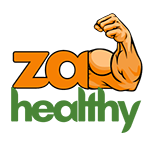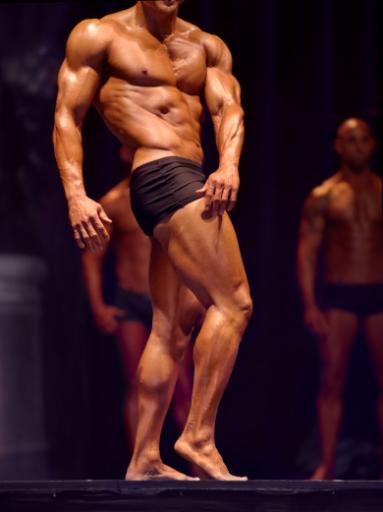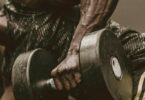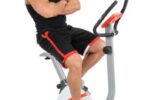To improve your lower body strength, fitness, and appearance, you need to work on your lats, VMO, and inner chest muscles. These muscles are often overlooked, but they play a crucial role in back health and function, as well as leg and chest shape and symmetry. In this blog post, we will show you the best exercises to train these three muscles and some tips and tricks to optimize your results. Let’s get started!
- The lats are the large muscles of the back that run from the back of the shoulder down to the hips.
- The VMO is the teardrop-shaped muscle that sits on the inside of your thigh above the knee.
- The inner chest is the part of the pectoral muscle that lies close to the sternum.
In the previous blog, We highlighted the following: Take it.
- The deltoid is the large shoulder muscle that covers the top of each shoulder joint.
- The serratus is the fan-shaped muscle that wraps around the outside of your rib cage and attaches to the sides of your shoulder blades.
- The brachialis is the deep muscle that runs beneath the biceps and is responsible for bending your arm at the elbow.
Lats Muscle Workout

The last muscle is the most significant muscle of the back and one of the body’s most powerful muscles. It helps you pull your arms down and back and extend and rotate your spine. It also gives your back a wide and V-shaped appearance. To train your lats muscle workout , you must perform exercises involving pulling movements, such as rows and pull-ups. Here are some of the best lats exercises you can do:
- Pull-up: Thislats muscle workout exercise is a classic move that challenges your entire lats muscle, as well as your biceps, forearms, and core. To do this exercise, you need a pull-up bar or a sturdy overhead object that you can grip. Grab the bar with a shoulder-width, overhand grip and hang from it with your arms fully extended. Pull yourself up until your chin is above the bar, squeezing your lats and back at the top. Lower yourself back down until your arms are fully extended. That’s one rep. Do as many reps as you can.
- Bent-over row: This lats muscle workout exercise works your lats muscle by forcing it to pull the weight toward your body against gravity. It also works your lower back, traps, and rear deltoids. To do this exercise, you can use a barbell, a pair of dumbbells, or a cable machine. Stand with your feet hip-width apart and hold your equipment of choice with a shoulder-width, overhand grip. Bend your knees slightly and hinge forward at your hips until your torso is almost parallel to the floor. Keep your back straight and your core tight. This is the starting position. Pull the weight up to your lower chest, keeping your elbows close to your sides and your shoulder blades together. Lower the weight back to the starting position. Do 10 to 12 reps.
- Straight-arm pulldown: This exercise isolates your lats muscle by eliminating the elbow flexion of a regular pulldown. It also works your triceps and core. To do this exercise, you need a cable machine with a straight bar or a rope attachment. Stand in front of the machine and grab the attachment with a shoulder-width, overhand grip. Step back a few feet and lean forward slightly. Your arms should be fully extended and in line with the cable. This is the starting position. Keeping your arms straight, pull the attachment down to your thighs, contracting your lats and triceps. Return to the starting position. Do 15 to 20 reps.
VMO Muscle Workouts
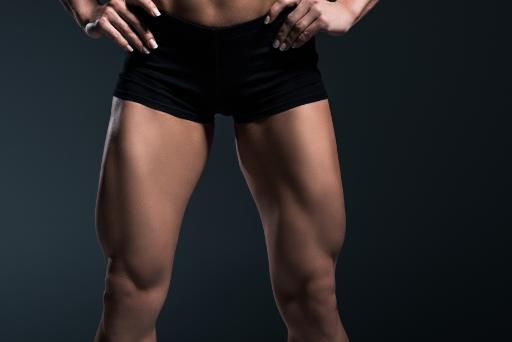
The VMO muscle, or the vastus medialis oblique, is a small but significant muscle that sits on the inside of your thigh above the knee. It helps you extend your knee and stabilize your kneecap. It also gives your legs a more defined and symmetrical look. To train your VMO muscle workouts , you must perform exercises involving knee extension with your feet turned out. Here are some of the best VMO exercises you can do:
- Terminal knee extension: This VMO muscle workouts exercises activates your VMO muscle by forcing it to work in the last few degrees of knee extension. It also works your quads and glutes. To do this exercise, you can use a resistance band, a cable machine, or a leg extension machine. Attach the band or the cable to your lower leg, just above your ankle. Stand with your feet shoulder-width apart and your back straight. Your knees should be slightly bent, and your toes pointed out. This is the starting position. Extend your leg until your knee is entirely straight, squeezing your VMO and quads at the top. Hold for a second, then return to the starting position. Do 15 to 20 reps on each leg.
- Bulgarian split squat: This VMO muscle workouts exercises challenges your VMO muscle by forcing it to stabilize your knee and prevent it from caving in. It also works your glutes, hamstrings, and calves. You need a bench or a box behind you to do this exercise. Stand a few feet away from the bench and place your back foot on top of it. Your front foot should be flat on the floor, and your toes pointed out. Hold a dumbbell in each hand at your sides. This is the starting position. Lower your body until your front thigh is parallel to the floor and your back knee is close to the ground. Keep your chest up and your core tight. Push through your front heel and stand back up to the starting position. Do 10 to 12 reps on each leg.
- Sissy squat: This VMO muscle workouts exercises isolates your VMO muscle by eliminating the hip flexion of a regular squat. It also works your quads and core. To do this exercise, you need a pole or a wall to hold on to for balance. Stand with your feet shoulder-width apart and your toes pointed out. Hold on to the pole or the wall with one hand. This is the starting position. Lean back slightly and lift your heels off the floor. Bend your knees and lower your body until your thighs are parallel to the floor and your torso is almost horizontal. Keep your knees in line with your toes and your core engaged. Extend your knees and return to the starting position. Do 15 to 20 reps.
Inner Chest Muscle Workout
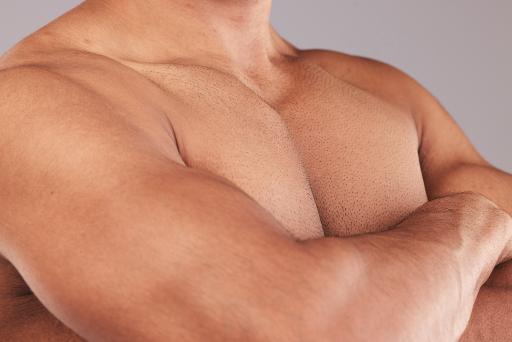
The inner chest muscle, or the sternal head of the pectoralis major, is the part of the chest muscle that lies close to the sternum. It helps you bring your arms across your chest, as well as press and push objects. It also gives your chest a fuller and more defined look. To train your inner chest muscle workout , you must perform exercises involving chest contraction with your arms close together. Here are some of the best inner chest workout exercises you can do:
- Cable crossover: This inner chest muscle workout exercise works your inner chest muscle by forcing it to squeeze your arms together against the resistance of the cables. It also works your anterior deltoid and triceps. It would help if you had a cable machine with two pulleys set at a high position to do this exercise. Stand in the machine’s centre and grab the handles with a palms-down grip. Step forward and lean forward slightly. Your arms should be extended to your sides and slightly in front of you. This is the starting position. Bring your arms together in front of your chest, crossing one over the other. Squeeze your chest and hold for a second. Return to the starting position. Do 10 to 12 reps, alternating the arm that crosses over.
- Hex press: This inner chest muscle workout exercise targets your inner chest muscle by forcing it to maintain constant tension and contact between the weights. It also works your triceps and forearms. To do this exercise, you need a pair of hexagonal dumbbells. Lie on a flat bench and hold a dumbbell in each hand with a neutral grip. Press the dumbbells together so that they touch each other. Your arms should be extended above your chest. This is the starting position. Lower the dumbbells to your chest, keeping them pressed together. Press them back up to the starting position. Do 10 to 15 reps.
- Diamond push-up: This inner chest muscle workout exercise challenges your inner chest muscle by forcing it to work in a narrow range of motion. It also works your triceps and anterior deltoid. To do this exercise, get into a plank position with your hands and feet on the ground. Your hands should be close together under your chest, forming a diamond shape with your fingers. Your body should form a straight line from head to heels. This is the starting position. Bend your elbows and lower your chest toward the floor, keeping your elbows close to your sides. Push yourself back up to the starting position. Do as many reps as you can.
Conclusion
In this blog post, we have covered six key muscles that you should train for a strong and sculpted body. These muscles are the deltoid, the serratus, the brachialis, the lats, the VMO, and the inner chest. We have also shown you the best exercises to train each of these muscles, as well as some tips and tricks to optimize your results.
By incorporating these exercises into your workout routine, you will be able to improve your performance, prevent injuries, and enhance your appearance. You will also be able to target some of the most common keywords related to muscle workouts, such as deltoid muscle workout, serratus muscle workout, brachialis muscle workout, lats muscle workout, VMO muscle workout, and inner chest muscle workout.
We hope you enjoyed this blog post and learned something new. If you have any questions or feedback, please leave a comment below. And don’t forget to share this post with your friends and followers. Thank you for reading!
